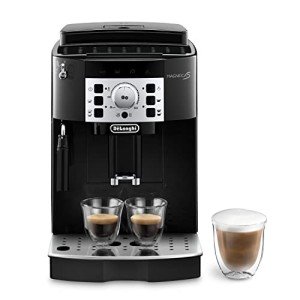Bean To Cup Espresso Coffee Machine: The Ultimate Guide
Over the last few years, the coffee culture has actually experienced a substantial improvement, with the rise of home developing devices providing benefit and quality comparable to café offerings. Amongst these gadgets, the Bean to Cup Espresso Coffee Machine stands out as a preferred among coffee connoisseurs and casual drinkers alike. This detailed guide explores what these machines are, how they operate, the benefits they use, and elements to consider when choosing the best one.
What is a Bean to Cup Espresso Coffee Machine?
A Bean to Cup Espresso Coffee Machine is a sophisticated coffee developing gadget that grinds coffee beans fresh for each cup, automating the entire espresso-making process. These machines generally include built-in mills, integrated milk frothers, and precise developing technology, allowing users to develop top quality espressos, lattes, cappuccinos, and more, all from the comfort of their homes. The convenience, coupled with the rich and robust flavors produced, has made these machines increasingly popular.
How Does It Work?
The fundamental operation of a Bean to Cup Espresso Coffee Machine can be broken down into numerous key steps:
Bean Grinding
- The machine grinds whole coffee beans right away before brewing, making sure maximum freshness and flavor retention.
Brewing
- Ground coffee is loaded into a filter, and hot water is forced through the coffee premises at high pressure, which is important for creating espresso.
Frothing (Optional)
- Many models include a steam wand or milk frother for preparing frothed milk for lattes and coffees.
Serving
- The last includes giving the brewed coffee into a cup, typically with programmable functions for modification.
Benefits of Bean to Cup Espresso Machines
Buying a Bean to Cup Espresso Coffee Machine offers many advantages, adding to its growing appeal.
| Advantage | Description |
|---|---|
| Convenience | One-touch operation reduces the time and effort needed to prepare coffee. |
| Quality | Newly ground beans cause a richer, more delicious beverage compared to pre-ground options. |
| Modification | Users can change settings to suit personal choices, consisting of grind size, coffee strength, and milk froth levels. |
| Affordable | Although the preliminary investment might be high, cost savings on coffee purchases from cafés can be significant gradually. |
| Adaptability | The capability to brew various coffee types, from espresso to cappuccino, broadens the machine's appeal. |
Secret Features to Look For
When selecting a Bean to Cup Espresso Coffee Machine, various features can affect the purchase decision. Below are essential elements to think about:
Grinder Type
- Burr grinders are chosen over blade grinders for their consistent grind size.
Brewing Pressure
- Look for machines that offer at least 15 bars of pressure for optimum espresso extraction.
Milk Frother
- Choose in between manual steam wands or automatic milk frothers based on preferences for milk texture and foam.
Interface
- An user-friendly control board with programmable settings boosts the total experience.
Size and Design
- Think about the countertop area offered and select a design that complements your cooking area looks.
Maintenance Options
- Some machines offer automatic cleaning cycles, which can conserve time and effort in maintenance.
Popular Bean to Cup Espresso Machines
Picking a machine that fits one's needs can be difficult. Below is a list of popular models, understood for their dependability and performance.
| Model | Key Features | Price Range |
|---|---|---|
| De'Longhi Magnifica ESAM3300 | Adjustable coffee strength, compact style | ₤ 550 - ₤ 700 |
| Breville Barista Touch | Touchscreen controls, integrated conical burr mill | ₤ 800 - ₤ 1,150 |
| Saeco PicoBaristo | Automatic milk frother, 12 coffee specialties | ₤ 900 - ₤ 1,300 |
| Jura E8 | Pulse Extraction Process, Alexa Compatible | ₤ 1,800 - ₤ 2,500 |
| Gaggia Anima | Easy to clean, programmable settings | ₤ 500 - ₤ 800 |
Upkeep Tips
Keeping a Bean to Cup Espresso Coffee Machine in good condition is necessary for guaranteeing longevity and ideal efficiency. Here are some maintenance ideas:
- Regular Cleaning: Clean the machine's parts frequently, consisting of the drip tray, coffee grounds container, and water reservoir.
- Descaling: Perform descaling every few months based on water hardness and usage to prevent mineral accumulation.
- Change Water Filter: If the machine has a water purification system, change the filter as advised.
- Examine Seals and Gaskets: Check for wear and tear to prevent leaks and make sure proper pressure throughout brewing.
Frequently asked questions
1. Which Bean To Cup Coffee Machine to Cup Espresso Machines easy to use?Yes, Which Bean To Cup Coffee Machine of designs are developed for user benefit with simple control panels and one-touch operation. 2. Can I use pre-ground coffee in these machines?While some machines enable making use of pre-ground coffee, the main benefit lies in using whole beans for fresh grinding. 3. How often need to I clean my Bean to Cup machine? Which Bean To Cup Coffee Machine is crucial; daily cleaning of detachable parts and descaling every 2-3 months are generally advised. 4. What is the average
life expectancy of a Bean to Cup Espresso Coffee Machine?With proper maintenance, these machines can last anywhere from 5 to 15 years based upon use quality
. 5. Are these machines worth the investment?Though they can be pricey, the benefit, quality coffee production, and long-term cost savings make them a worthwhile financial investment for many coffee lovers. Buying a Bean to Cup
Espresso Coffee Machine can substantially enhance the home
coffee experience. By providing newly brewed, top quality coffee, these machines deal with the growing demand for café-style beverages in the convenience of one's kitchen area. With many alternatives on the marketplace, comprehending features and personal choices will assist in picking the ideal machine to fit any coffee lover's requirements.

